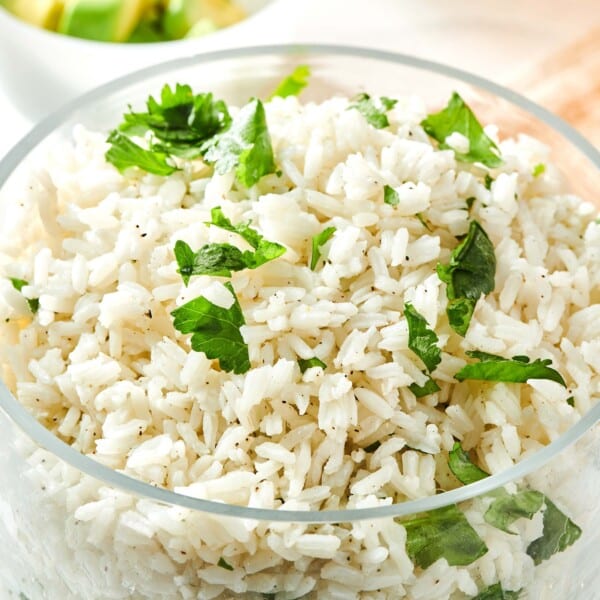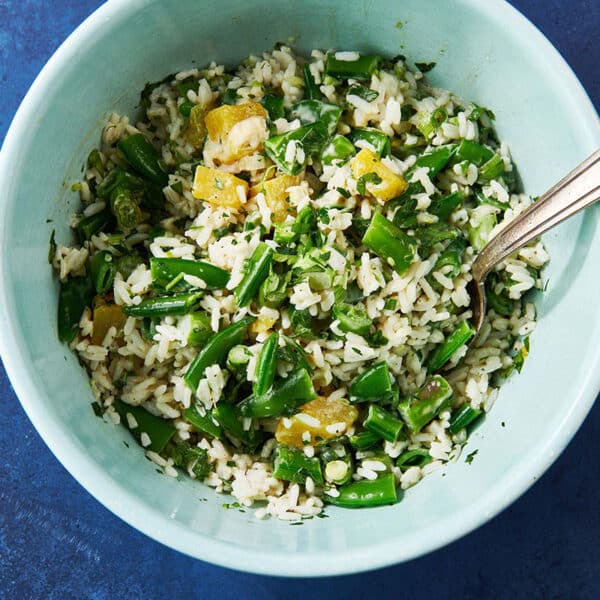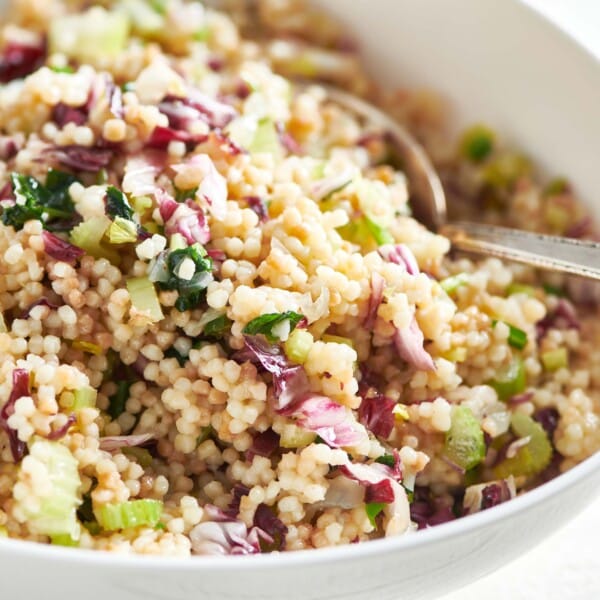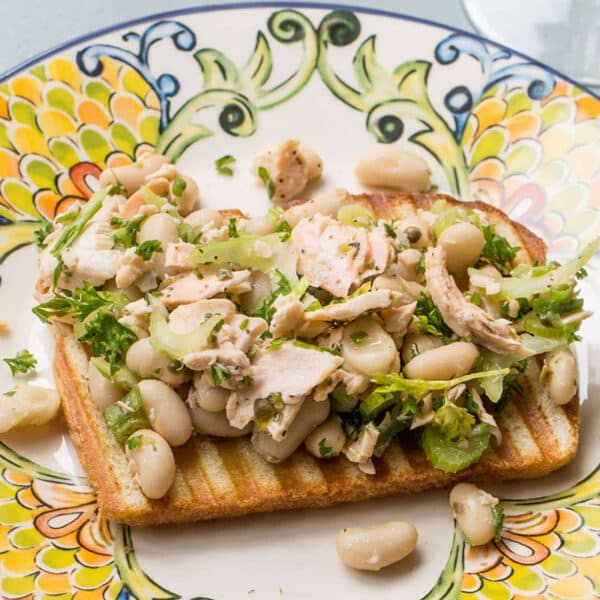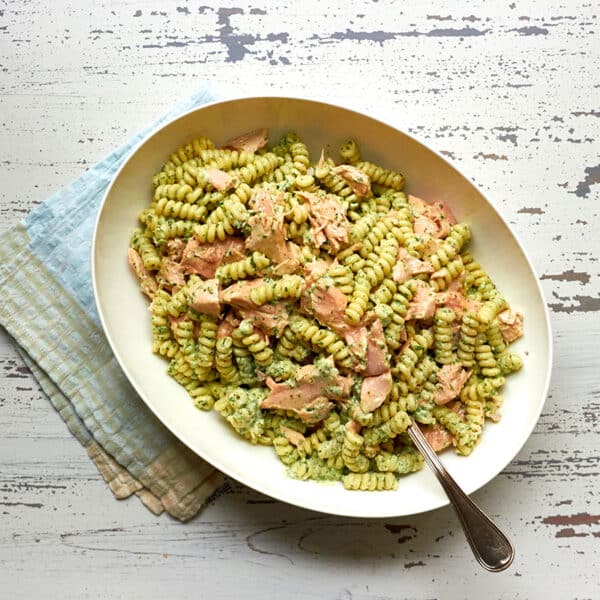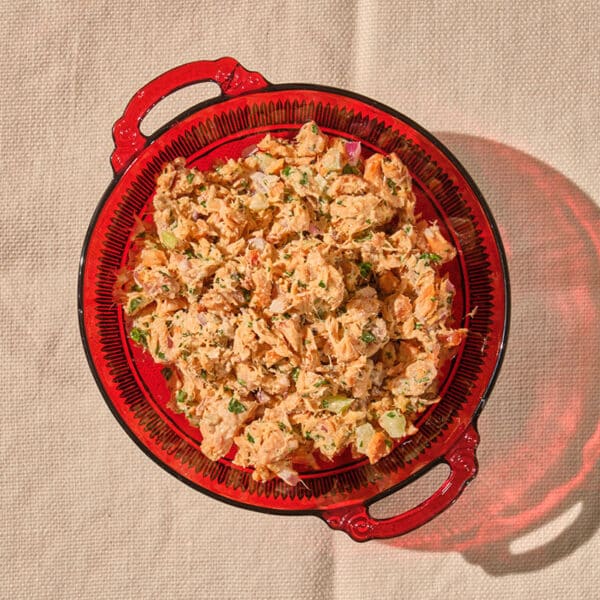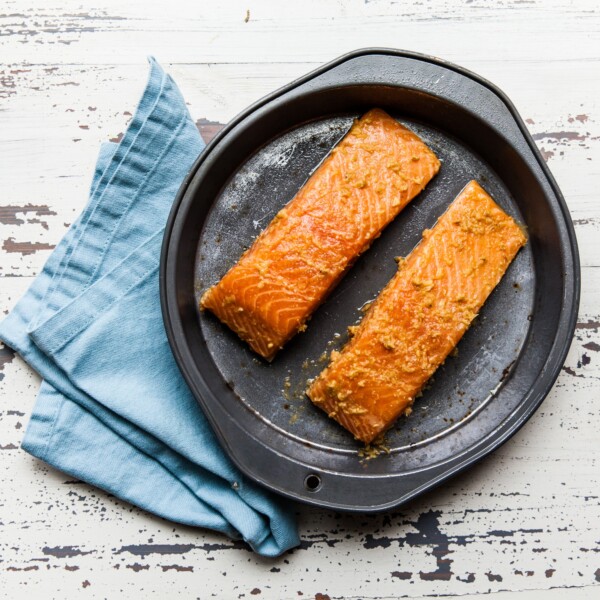How to Grill Salmon
Updated Jul 30, 2025
This post may contain affiliate links. Please read our disclosure policy.
Grilled salmon is one of those meals that feels fancy but is secretly one of the easiest things to pull off on a grill. Whether you’re using a gas or charcoal grill, this guide will show you exactly how to grill salmon so it’s moist, flavorful, and doesn’t stick. From simple seasonings to smart grill tips, this is your go-to method for perfect grilled salmon every time.
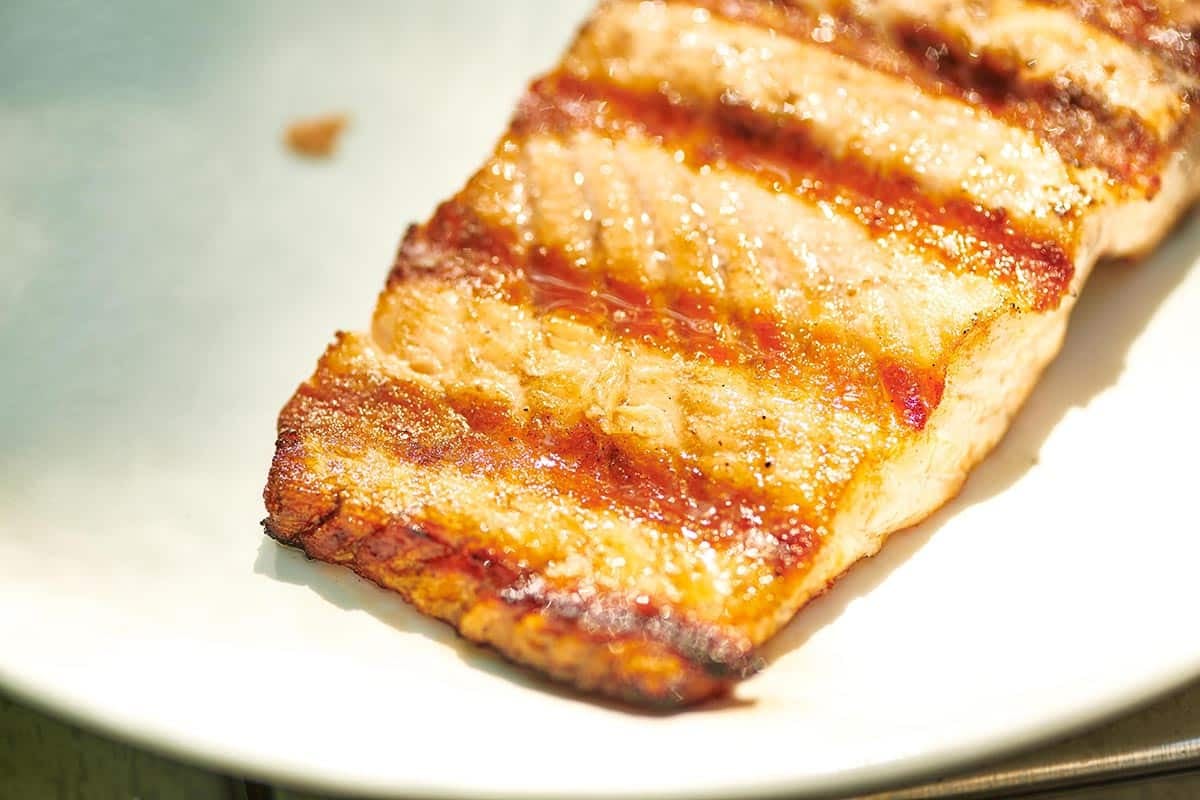
If grilled salmon has ever stuck to your grill grates or ended up overcooked and dry, I promise you, those days are behind you. This is your foolproof guide to grilling salmon so it’s perfectly cooked, full of flavor, and never falls apart. Whether you’re using a gas or charcoal grill, skin-on or skin-off fillets, this recipe walks you through how to grill salmon like a total pro – with tips for seasoning, flipping, and getting that perfect golden crust. Once you’ve got this down, salmon on the grill becomes one of the easiest and most satisfying dinner of the summer.
Serve it with Quinoa Salad and Grilled Corn on the Cob or Grilled Potatoes for an amazing, simple summer dinner. Some Grilled Pineapple would also be a perfect companion. Or if you’re looking for something special, pair it with a sauce like Easy Lemon Butter Sauce, Chimichurri Sauce, or Dill Sauce.
What's In This Post?
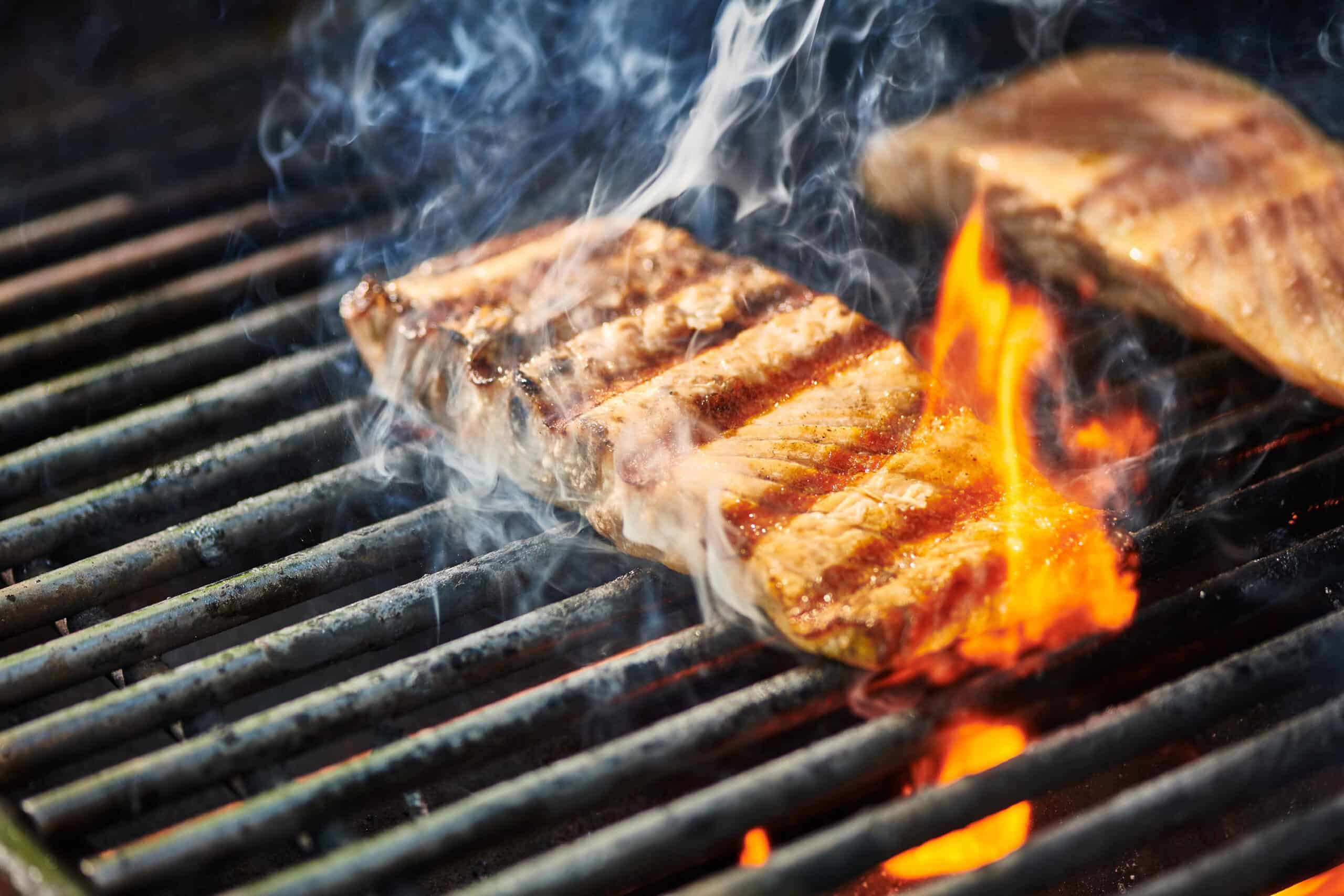
A simple grilled salmon dinner is one of the best things to come off of your grill. Enjoy it plain and simple or season any way you like.
By signing up, you agree to our Privacy Policy.
Ingredients
- Salmon filets – Choose filets of similar thickness, about 1 1/4 to 1 1/2 inches thick.
- Olive oil – For brushing the fish and drizzling at the end.
- Lemon wedges – To serve.
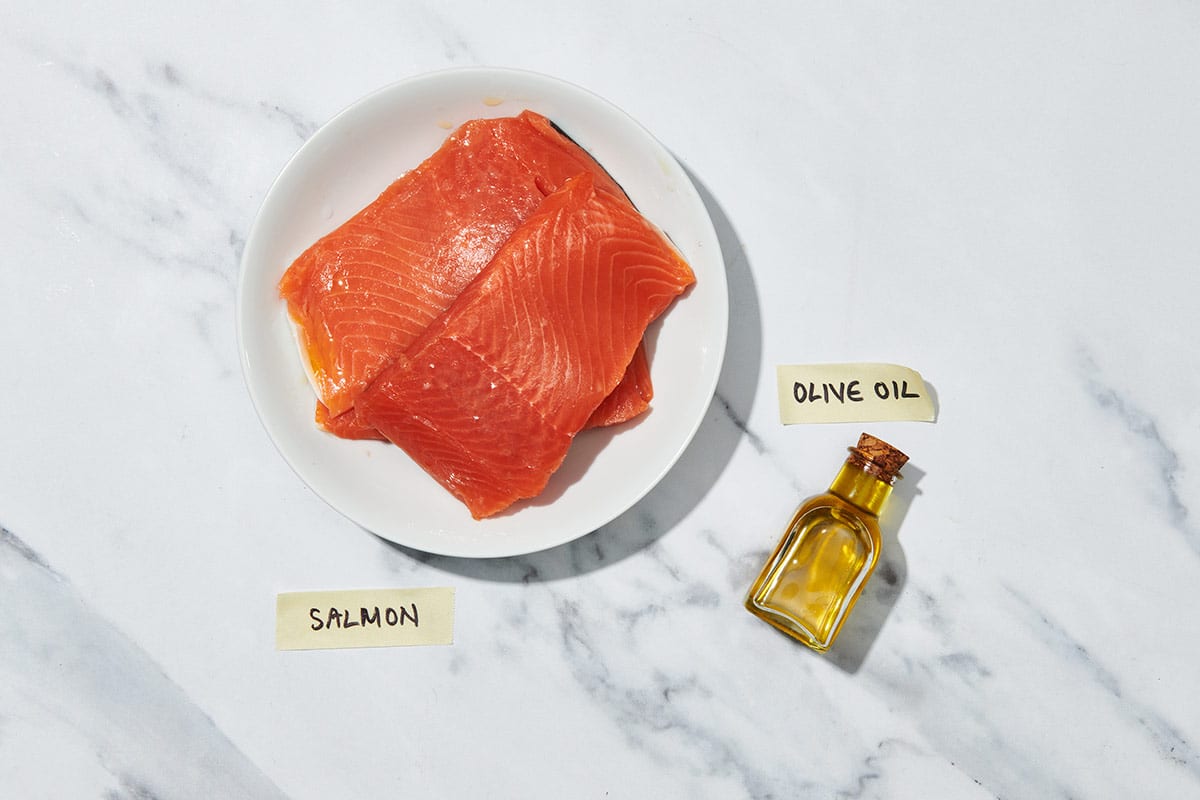
The Best Salmon for Grilling
I much prefer salmon filets to steaks in general. To make sure you are buying the most sustainable salmon available to you, check out Montgomery Bay’s Seafood Watch website; it tells you which salmon is best in terms of sustainability.
You want to make sure — as with any fish — that your salmon is perfectly fresh before grilling. If possible, purchase your salmon at a fish store that keeps their fish on ice. If you are buying packaged salmon, be sure it comes from a store that sells a lot of it. Most salmon has been frozen at some point between the moment it was harvested and when you get it home — that’s fine!
Whenever possible, buy filets of similar thicknesses so they cook at the same time. If you have some thinner filets, know that you will probably want to take them off the grill earlier. A 1 1/2-inch center-cut filet is perfect for grilling, so buy those if you can. Filets from the tail end will be thinner, and those from the head end might be thicker. Adjust the cooking time accordingly.
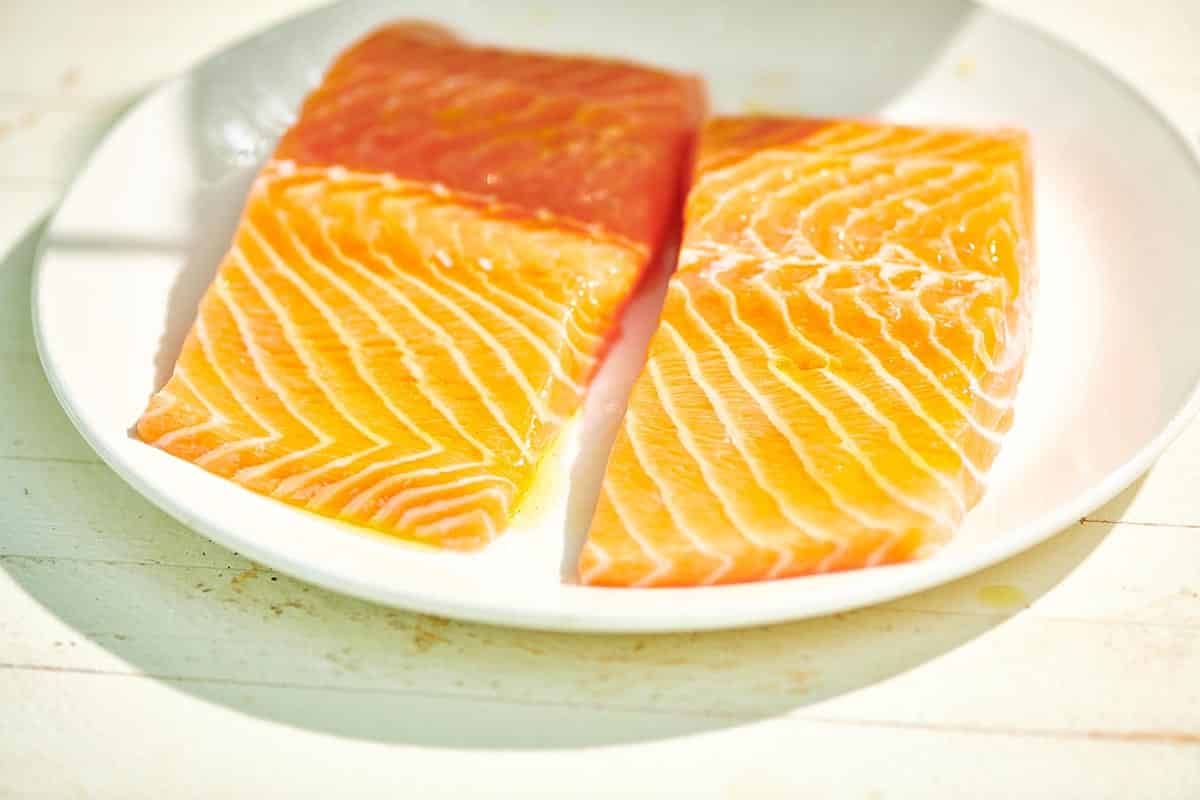
If you choose salmon fillets with the skin, start the salmon skin-side down, and cook it most of the way through before flipping, just finishing it on the other side. This will allow the skin to crisp up before slipping, which will also prevent the fish from sticking. The second top side will already be somewhere firm from the heat of the grill, so it should be easy to slide the spatula underneath and remove the fish from the grill grates.
Variations
- You can marinate the salmon before grilling for another layer of flavor. Try Ginger, Mint, and Lime Marinade or Spicy Asian Sesame Marinade. Pat the fish dry and brush it with oil before grilling.
- You can add other seasonings to the fish if you like dried herbs, spice blends, or rubs.
How Long to Grill Salmon
It depends more on the thickness of the fish than the size of the piece. Larger pieces will also take more time, but it’s the thickness of the fillets that will mostly dictate the cooking time. The length of time also depends on how you like your fish cooked: I usually prefer salmon on the medium-rare side, with a dark pink center. Others prefer it to be cooked all the way through, so the fish turns opaque and flaky. I actually like it pretty much all ways — except overcooked and dry, which is easy to avoid with some attention!
Use the timing chart below as a guide. Start checking at the earlier side of the cooking range if you like your fish on the rarer side; add those extra minutes if you like your fish cooked completely.
Kitchen Smarts
You can grill multiple pieces of fish at a time, and it won’t affect the grilling time, or at least not by much. Make sure you can easily tend to, flip, and remove the salmon from the grill, so don’t overestimate how many pieces you can cook at once! Leave room between the filets for the heat to circulate.
Salmon Internal Temperature
If you want fully cooked salmon, remove it from the grill when it reaches an internal temperature of 140 F; as it rests, the temperature will climb to 145 F.
To peek inside the salmon (perhaps you don’t have an instant-read thermometer, or maybe you just want to be sure), make a small cut with a paring knife into the fish and peek inside. If it is very close to your preferred level of doneness, pull it from the grill right away.
Think about finishing these with a drizzle of Easy Lemon Butter Sauce.
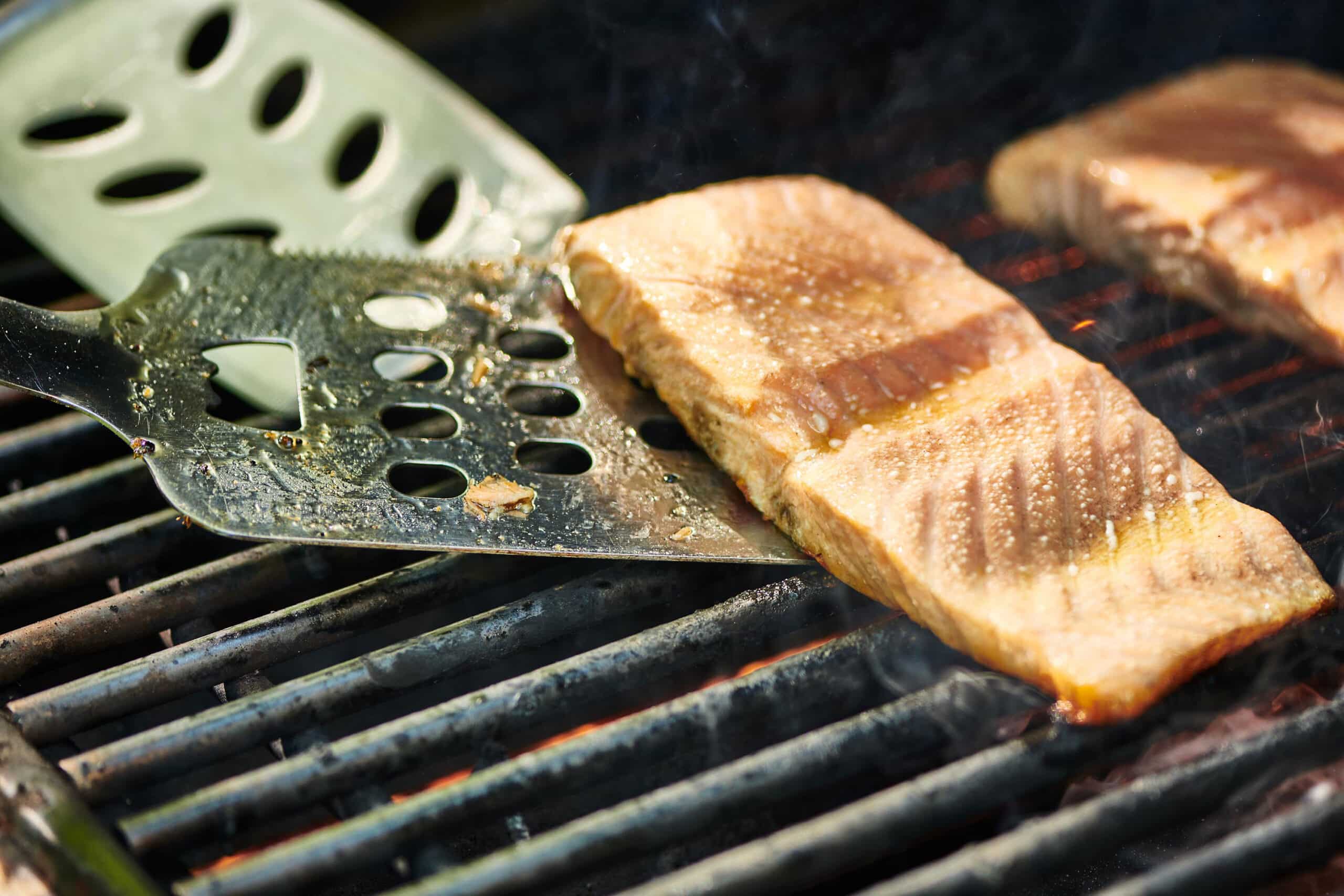
Salmon Cooking Times
| Level of Doneness and Internal Temperature | Total Cooking Time |
|---|---|
| Rare (dark pink in the center), 120 F | 7 to 9 minutes |
| Medium Rare, 125-130 F | 12 to 16 minutes |
| Medium, 130-135 F | 10 to 13 minutes |
| Medium Well 135-140 F | 11 to 14 minutes |
| Well Done 145 F | 12 to 15 minutes |
How to Keep Salmon From Sticking to the Grill
First, make sure your grill is very clean. Scrape down the grill grates thoroughly with a grill brush. Then, oil the grill grates very well. Drizzle some vegetable oil on a clean paper towel or dip a paper towel into a little bowl of oil. Use your grilling tongs to rub the oiled paper towel over the grill grates until they are shiny. If you are using a grill basket or grill grate (see below), oil that as well. And don’t try to flip the fish before it releases easily from the grill grates. You will be cooking it for the majority of the grilling time before flipping it, which will prevent sticking.
Also, lightly oil the salmon itself before grilling it! If the salmon is in an oil or mayo-based marinade, that serves the same purpose. Otherwise, brush the salmon with a nice coating of oil. You can use olive oil or vegetable oil, whichever works best with the flavors of the fish recipe. Vegetable oil is more neutral, and olive oil works well with any Mediterranean-style fish dish. Mayonnaise is another option — it is neutral in flavor, and you won’t be able to detect it once the fish is cooked.
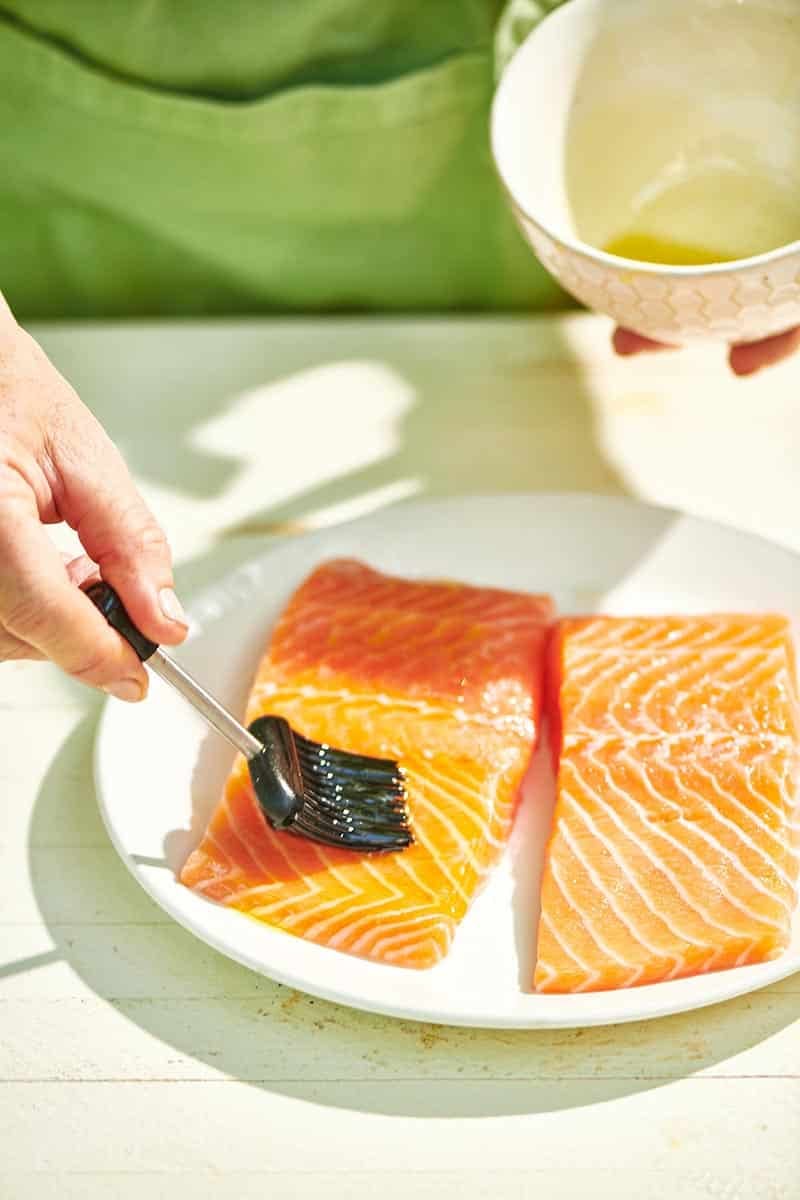
You can use a wide spatula or tongs to flip the fish. If the fish releases from the grill easily and you can flip it with tongs instead of a spatula, you can probably get a nice and clean surface without tearing the fish. But a flat, wide spatula and a steady, sure hand can also work.
I also like to use two spatulas for flipping fish. I use one to lift up the edge a bit and then slide the second one underneath, which allows for a smoother motion and prevents tearing the bottom of the fish.
And if your fish sticks a little, oh well, it will taste fantastic no matter what.
Using a Fish Basket to Grill Salmon
If you like fish on the grill, consider purchasing a fish grilling basket (which can also be used for other things, like vegetables). These are hinged wire baskets that allow the exterior of the fish to get direct contact with the grill and the fire. Put the fish in the basket, close the latch, and turn the basket to turn the fish.
You can also find a grill accessory called a fish grate, or grilling grate. This lies flat on the grill, and because it is flat, it allows a spatula to slide underneath the fish a lot more cleanly than the wider, rounder grill bars. Because there is more surface area, you won’t get the same kind of grill marks, but things won’t fall through the grates.
How to Grill Salmon Perfectly Every Time
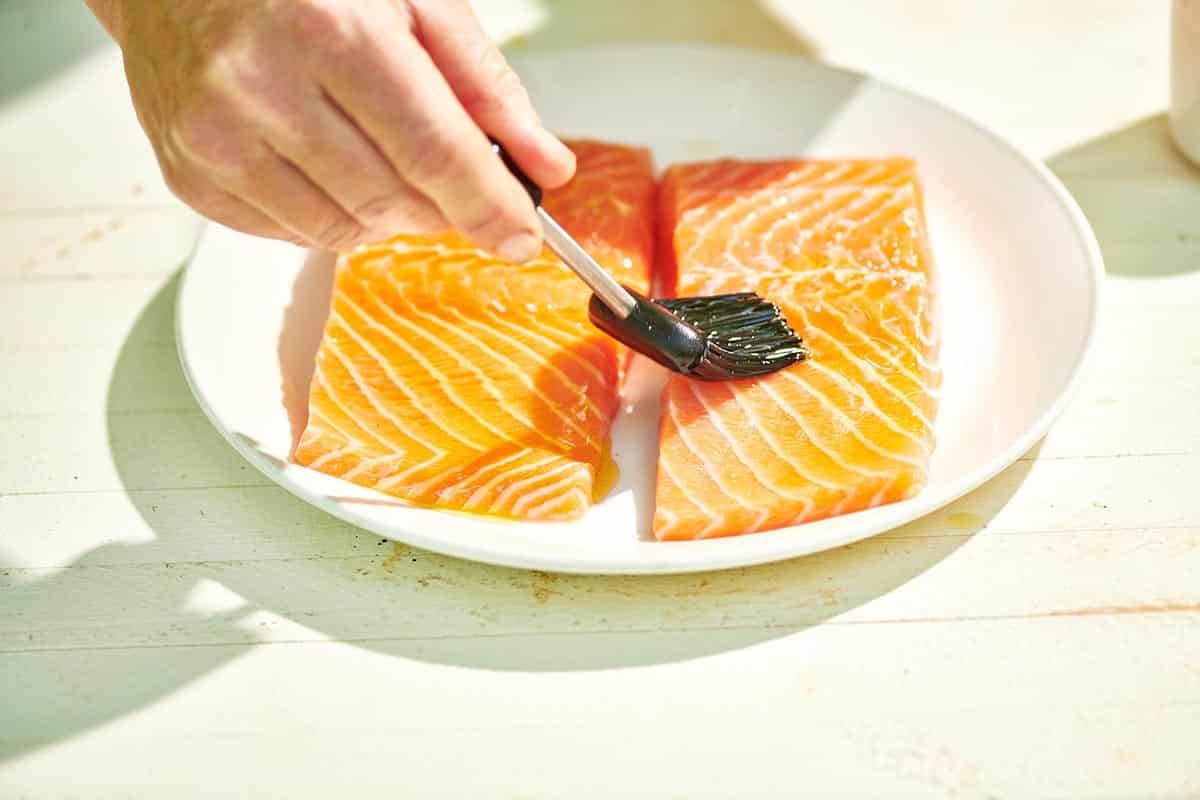
- Prep the grill and salmon: Heat the grill to medium-high. Wipe the grill grates with oil-dipped paper towels. Brush the salmon with olive oil and season.
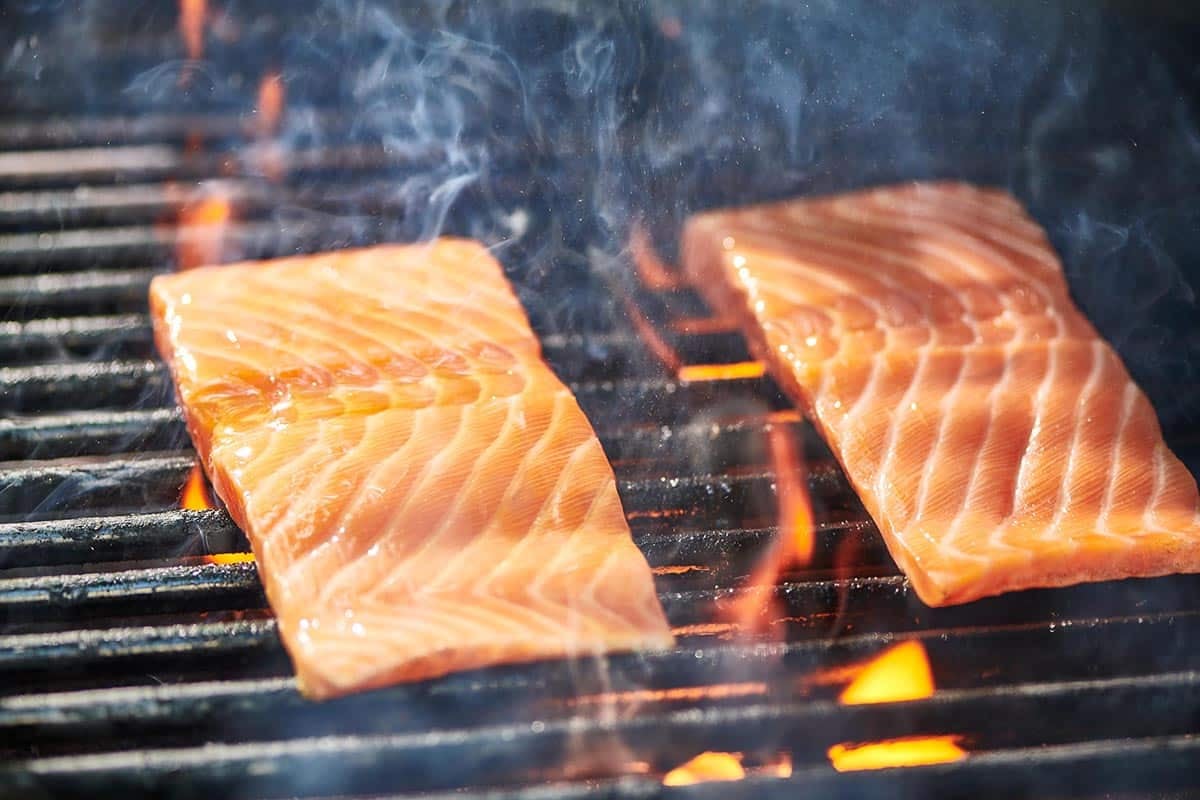
- Grill the salmon: Grill the fish for 6 to 7 minutes on the first side, until it releases from the grill grates easily.
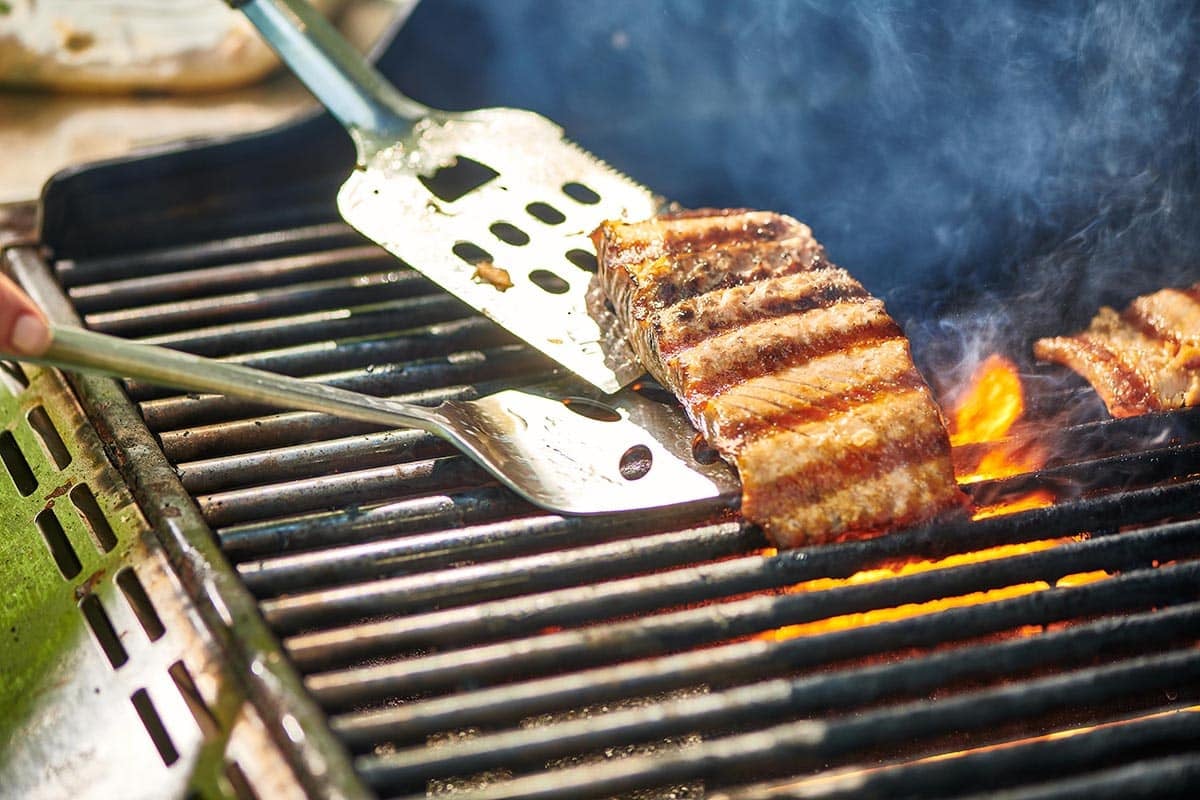
- Turn the fish: Cook on the second side for another 3 to 4 minutes, until the bottom is firm with nice grill marks and releases easily from the grill.
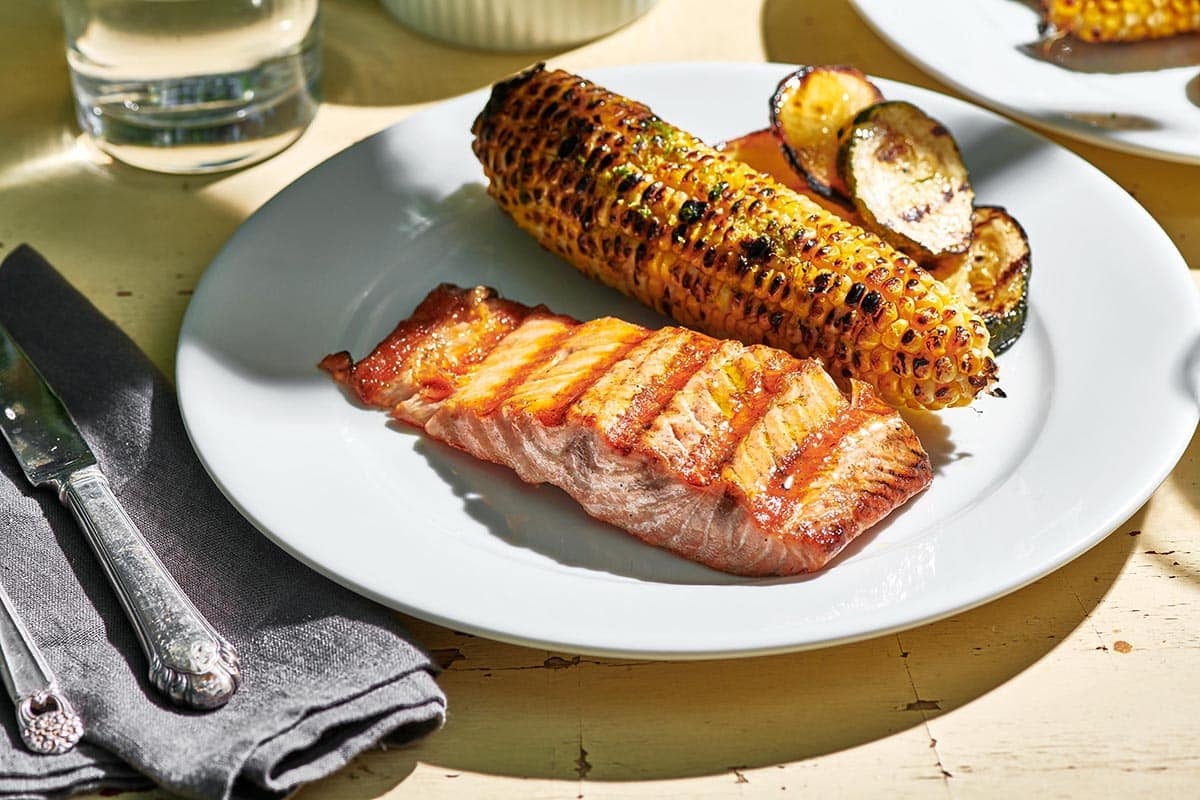
- Serve: Transfer the fish to a serving platter. Give the finish a final drizzle of olive oil, if desired, and serve hot or warm with lemon wedges.
What to Know About Grilling Salmon Perfectly Every Time
You can do either, but note that covering the grill will speed up the cooking time a bit, so start checking your fish a bit earlier.
Because salmon is a very moist, fatty fish, as long as you don’t overcook it, it shouldn’t dry out on the grill. Make sure to brush it with olive oil first. All fish cooks very quickly on the grill (and elsewhere!) and can go from perfectly cooked to dry in a couple of minutes.
Like meat, you can use a touch method to determine if the salmon is cooked to your liking. Give the fish a little squeeze on the side. Medium-rare salmon should be fairly firm with some give, and well-cooked salmon will feel very firm.
Fully cooked salmon will be opaque throughout and flake easily with a fork. Or, you may want to cook it to medium-rare, with a bit of dark pink in the middle. The FDA recommends a safe internal temperature of 145°F for fish and shellfish, but if you are using fresh, high-quality fish, you can keep the fish on the rarer side. See the cooking chart above for more info!
That’s up to you. You may or may not have the choice to buy when buying salmon, but either will work well. The skin will crisp up nicely on the grill and is quite delicious. However, if all you can find is skin-on salmon, and you prefer it without, go ahead and grill the salmon with the skin, but then peel it off before serving.
Direct medium-high heat is best for grilling salmon. Grilling the salmon at a higher temperature allows the fish to get a nice crust on the outside without cooking the middle more than you like.
One way to test that your grill is at the right temperature is to hold your hand 5 inches above the grill. You should be able to hold your hand there for just 3 to 4 seconds before it gets too hot. This temperature will create the bottom crust that is necessary to turn the fish without having it stick to the grill.
Salmon Grilling Tips
- If possible, buy filets of similar thicknesses so they cook at the same time. If you have some thinner filets, know that you will probably want to take them off the grill earlier.
- Use a large flat metal spatula, preferably a fish spatula, or grilling tongs to gently lift the edge of the fish from the grill. If you see nice grill marks and the fish releases easily from the grill, it is ready to flip. You can use a second spatula to help flip the salmon if that feels comfortable.
- When you flip the fish, turn it onto another clean, oiled part of the grill (you can also give the top of the fish another generous brush of oil to prevent sticking).
- When you place the oiled fish on the oiled grill, gently slide it an inch or so forward to prevent it from sticking.
What to Serve With Grilled Salmon
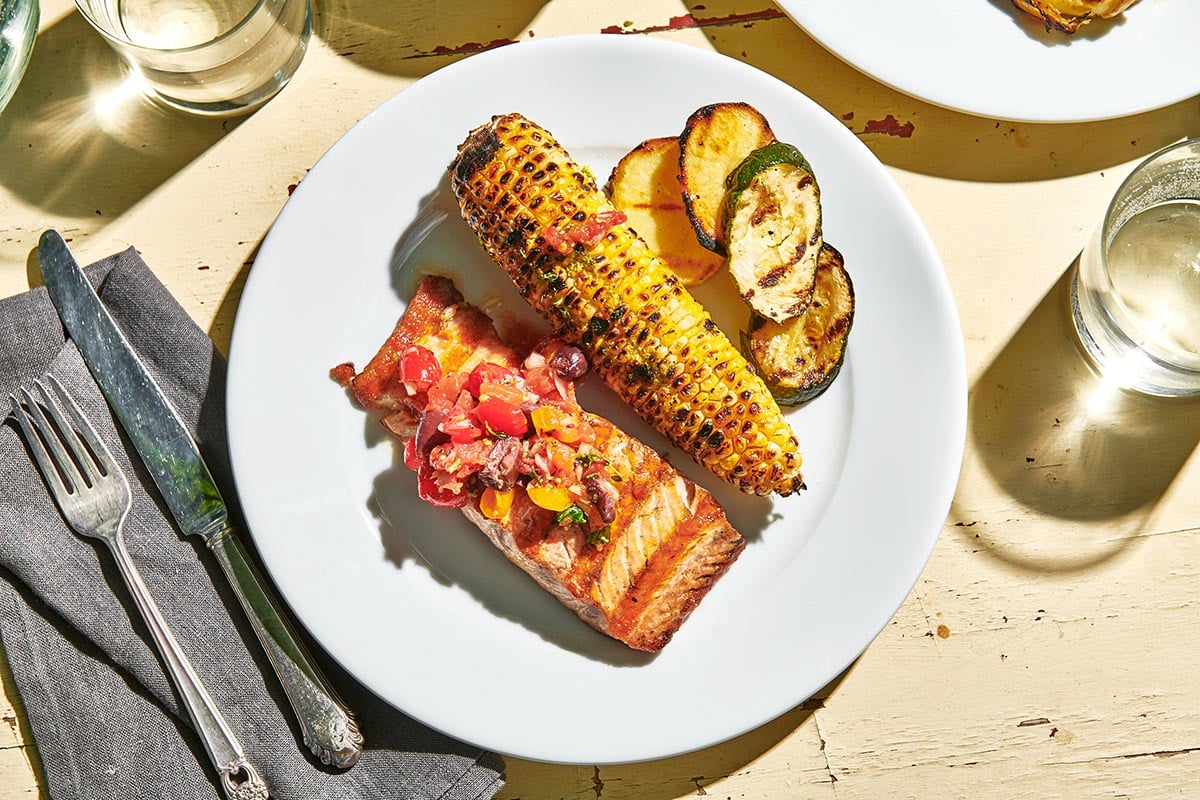
Sauces for Grilled Salmon
- Dill Sauce
- Creamy Cilantro Sauce
- Chimichurri Sauce
- Fresh Herb Sauce
- Horseradish Sauce
- Chermoula Sauce
- Remoulade Sauce
Pin this now to find it later
Pin It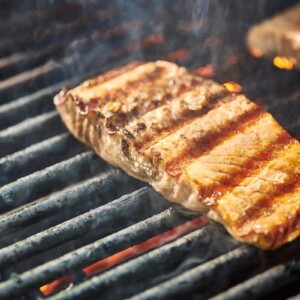
Grilled Salmon
Equipment
Ingredients
- Vegetable oil (for brushing the grill)
- ¼ cup olive oil (plus more for drizzling, if desired)
- 4 (6- to 8-ounce) salmon filets (about 1 1/4 to 1 1/2 inches thick)
- Kosher salt and freshly ground black pepper (to taste)
- Lemon wedges (to serve)
Instructions
- Heat the grill to medium-high. Use grilling tongs to dip a wad of paper towels in some vegetable oil, and use the oil-dipped paper towels to wipe down the grill rack.
- Brush the salmon on both sides with olive oil, and season with salt and pepper. Place the fish, skin side down if applicable, on the hot oiled grill and let cook for 6 to 7 minutes without moving. Use a large flat metal spatula, preferably a fish spatula, or grilling tongs to gently lift the edge of the fish from the grill. If you see nice grill marks, and the fish releases easily from the grill, it is ready to flip.
- Carefully flip the fish to another clean, oiled part of the grill (you can also give the top of the fish another generous brush of oil to prevent sticking). Cook on the second side for another 3 to 4 minutes, until the bottom is firm with nice grill marks and releases easily from the grill.
- Carefully use the spatula to transfer the fish to a serving platter. Give the finish a final drizzle of olive oil, if desired, and serve hot or warm with a few lemon wedges.
Notes
- Use a sure hand when flipping the fish.
- Try the two-spatula flipping method: Use one spatula to lift up the edge of the fish and then slide the second one underneath. This allows for a smoother motion and prevents the bottom of the fish from tearing.
- When you place the oiled fish on the oiled grill, gently slide it an inch or so forward to prevent it from sticking.
- When you flip the fish, turn it into a freshly oiled part of the grill that nothing was just cooked on — a totally clean new space.
